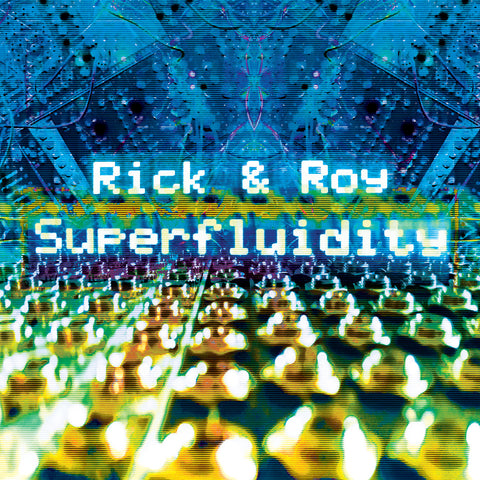Rick & Roy
Not unlike one of their compositions, the dynamic between Rick Steff and Roy Berry is as simple or as complicated as you want it to be.
The yin-yang is obvious. Rick is a seasoned piano player who's been performing since age 5, the son of a professional musician, a student of music theory and song structure who's toured with Hank Williams Jr. and Cat Power. Roy is a musical scientist, self-taught, voraciously curious and prone to falling down rabbit holes of experimentation. He's recorded and performed live electronic music with Overjoid, Gelatinous Cube and Synthohol.
But as with those compositions, the magic is in the layers.
Start with this one: Rick and Roy met through their day-and-night job, as keys player and drummer, respectively, for noted alt-country road warriors Lucero. And in the midst of 200-some-odd days a year of rocking, the duo will release an experimental electronic pop album this spring.
"Have I told you how Roy started playing drums?" Rick asks, while talking recently about their forthcoming debut Superfluidity. He tells the now somewhat famous story of Roy's notebook.
"We were recording the Lucero record Rebels, Rogues & Sworn Brothers, and when Roy would be frustrated with not getting a part to sound the way he wanted he'd go over to this tablet of paper and come back with the part," Rick says. "After five or six times, I said, 'What's in that book?' And he told me, 'When I learned to play drums, I locked myself in my apartment with a drum kit and came up with my own binary code system to determine how many hits and rests can occur over a finite amount of surfaces over a given span. And I wrote them in here.' That’s when I was like, “I’m gonna make music with you.”
After playing together in Lucero for years—often collaborating on tracks over a laptop in the back of a tour bus or talking about the evolution of modern synths or circuit bending—their official coronation as Rick & Roy came in 2013. Rick had an opportunity to compose for a short film score being recorded at Music+Arts Studio, where he'd recently finished producing a few songs for Americana/folk chanteuse Amy LaVere (Runaway's Diary). He called in Roy, and their work ultimately landed them a second project that required hours of original music.
It was on that film score job that the two honed what would become their process—"We make a mess and then we clean it up," as Roy says—and the sounds emerging from the control room caught the ear of Ward Archer, owner of the studio and Archer Records. He asked them if they wanted to make an album.
The resulting songs will pull you into their orbit—you’ll float through spaced out interludes, bounce into perfect, shiny electronic pop and then set adrift again, your vessel knocking against dissonance and feedback as you list toward the next surprise.
Though they are quick to give endless credit to others—Archer,Superfluidity producer Daniel Lynn, filmmaker Giri Swami—the whole thing is probably least of all surprising to Rick or Roy.
"It’s a totally different way of coming at music than what I came from and it makes me completely reinvigorated and inspired to do that," Rick says. "And hopefully there are things that I can do that he maybe can’t do."
Roy remembers the first time they met, in a recording session. Rick had played a part on a song and it was lovely. It was fine. But Roy thought something was missing. "Everybody else was afraid to say something," he remembers. "And I just said, 'hey, that was excellent. But, could you...make it weirder?"
Rick jumps in. "And I was like, Well, hell yeah I can!"

